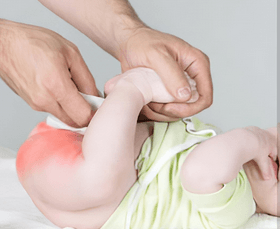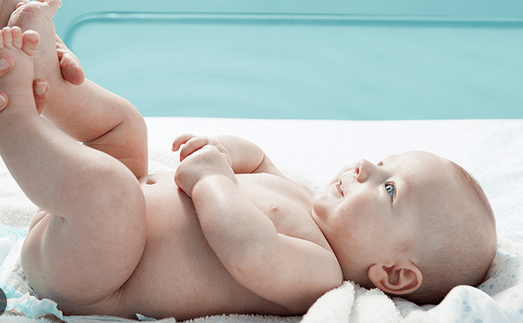Understanding Diaper Types
When it comes to myths about diapers, parents are often faced with a plethora of options. Each with distinct characteristics that cater to varying needs and preferences. The most common types of diapers include disposable, cloth, biodegradable, and hybrid options. Each type dispels the prevalent myth that all diapers serve the same purpose and perform identically.
Disposable diapers, often regarded for their convenience, utilize absorbent materials such as polymers to effectively manage moisture. Their design accommodates an easy on-and-off mechanism, allowing busy parents to quickly change their babies without the hassle of washing. However, this convenience does come with an environmental cost, as disposable diapers contribute significantly to landfill waste.
In contrast, cloth diapers are gaining popularity among eco-conscious parents. Made from natural fibers, such as cotton or bamboo, cloth diapers are reusable and can be washed and dried, reducing long-term costs and environmental impact. Despite this benefit, some parents believe cloth diapers require more effort in maintenance, which is a common myth that often discourages their use. In reality, advancements in laundering technology have made cleaning cloth diapers simpler than ever.
Biodegradable diapers
Biodegradable diapers represent a middle ground, designed to break down more rapidly than traditional disposable options. Although they are marketed as environmentally friendly, their absorption capabilities. Cost can vary significantly depending on the brand and material, making it essential for parents to investigate before purchasing.
Finally, hybrid diapers combine elements of both disposable and cloth varieties. These diapers typically feature a washable outer layer with a disposable insert, allowing parents the flexibility to choose based on convenience and environmental preference. As with other types, health and comfort considerations play a crucial role in selecting the most suitable diaper for a child’s needs.
In conclusion, understanding the differences among these diaper types allows parents to navigate myths about diapers. Make informed choices that align with their personal values and the well-being of their children.
Myths About Diapers Rash
Diaper rash is a common concern for parents, yet several myths about diapers contribute to misunderstandings regarding this issue. A prevalent belief is that all types of diapers lead to diaper rashes; however, this notion is misleading. Diaper rash can occur with any type of diaper, including cloth and disposable, but it is not solely dependent on the product used. Factors such as moisture, friction, and prolonged exposure to waste are more significant contributors to the development of rashes.
Another misconception is that diaper rashes are purely the result of poor hygiene practices. While inadequate cleanliness can exacerbate the condition, diaper rash often arises from irritation and allergic reactions rather than a lack of hygiene. For instance, some babies may develop a rash due to sensitivity to certain materials or chemicals in diapers, wipes, or lotions. Therefore, it is essential to consider that each child’s skin is unique, and what may irritate one may not affect another.
fungal infections

In some cases, diaper rash can be caused by fungal infections, such as candidiasis, which thrive in damp and warm environments typical of diaper use. Parents should be aware that proper ventilation and frequent changes can help mitigate this risk. To effectively prevent and treat diaper rash, protective barriers like creams can be applied, along with ensuring that the diaper is not too tight and allows for airflow.
Every parent should also recognize when to seek medical advice. If the rash is persistent despite home treatments, or if it is accompanied by severe symptoms such as swelling or pus, consulting a pediatrician is advisable. Understanding these facts about myths surrounding diaper rash can assist parents in maintaining their child’s skin health. Fostering a more comfortable experience for both child and caregiver.
Eco-Friendly Diapering: Separating Fact from Fiction myths about diapers

The topic of diapering often generates a significant amount of debate, particularly concerning its environmental impact. Many myths about diapers perpetuate misunderstandings about the sustainability of different types of diapers. Especially when contrasting disposable and cloth options. It is crucial for parents to have accurate and comprehensive information to make eco-conscious decisions.
One common myth claims that disposable diapers are more environmentally damaging than cloth diapers. While disposable diapers do indeed contribute to landfill waste—taking hundreds of years to decompose—cloth diapers are not without their environmental costs. The production, washing, and drying of cloth diapers require substantial water and energy. Studies suggest that, over their lifecycle, cloth diapers can have a comparable environmental footprint to disposables, especially if the washing is done efficiently. Thus, parents should consider both types carefully, weighing their benefits against their overall environmental impact.
Hybrid options and biodegradable diapers
Another point of confusion lies in the emergence of hybrid options and biodegradable diapers. Hybrids combine the benefits of both disposables and cloth, offering a more eco-friendly alternative while ensuring convenience. Though marketed as an environmentally-friendly solution, parents must verify the claims of biodegradability. As many so-called biodegradable diapers still require specific conditions to decompose effectively, which may not occur in standard landfills.
Ultimately, understanding these myths about diapers enables parents to make informed choices. By acknowledging the realities surrounding cloth, disposable, hybrid, and biodegradable diapers. Caregivers can better align their diapering practices with their environmental values. This knowledge empowers parents to contribute positively to a sustainable future while meeting the needs of their children.
Diaper Usage and Developmental Concerns
One prevalent concern among parents is the belief that prolonged diaper usage may hinder a child’s development. Particularly in areas such as potty training and physical capabilities. This myth suggests that extended diaper wear can delay necessary developmental milestones; however, it is essential to recognize that each child develops at a unique pace. Numerous factors influence the readiness for potty training, including physiological maturity, interest, and emotional readiness rather than the extended use of diapers.
Research indicates that children generally transition from diapers to potty training between the ages of 2 and 3 years. Though some may achieve this milestone earlier or later. It is critical to understand that using diapers does not inherently slow down physical development or learning processes. Many children who rely on diapers become confident walkers and explorers before they are fully potty trained. In fact, diaper usage can contribute to a sense of security, allowing youngsters to focus on their exploration and play during the critical early years.
Smooth transition from diapers: myths about diapers
To facilitate a smooth transition from diapers to potty training, parents can adopt several practical strategies. First and foremost, parents should watch for signs of readiness, such as showing interest in the toilet, staying dry for longer periods, or expressing discomfort while in a soiled diaper. When these indicators emerge, it can be beneficial to introduce a potty chair and discuss the process in a positive light. Establishing a consistent routine can also aid in successful training, as children thrive on predictability. Celebrating successes and maintaining a supportive environment fosters confidence, making the transition less daunting for both child and parent.
In conclusion, the association between delayed development and prolonged diaper use is unfounded. By embracing a child-centered approach and focusing on individual readiness, parents can ensure that the transition from diapers to potty training remains a positive and empowering experience.
More comfortable then other products